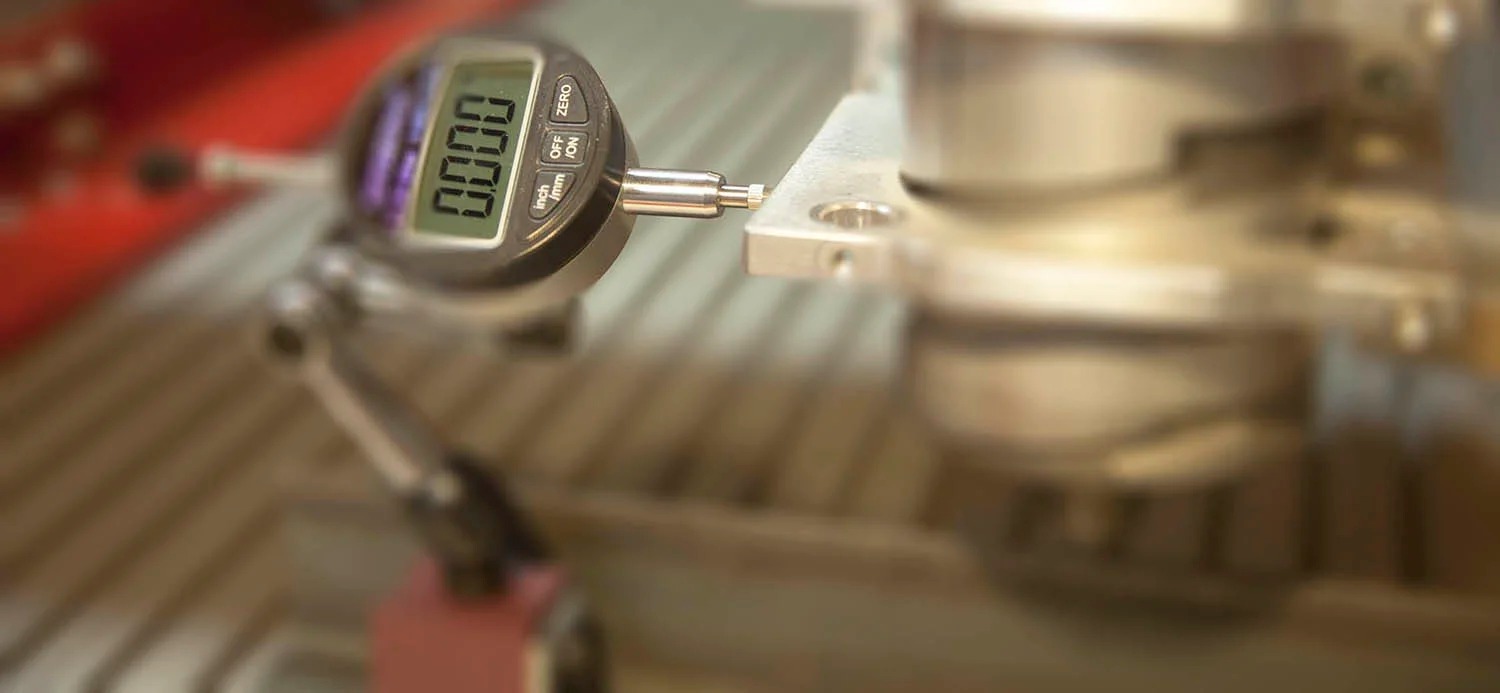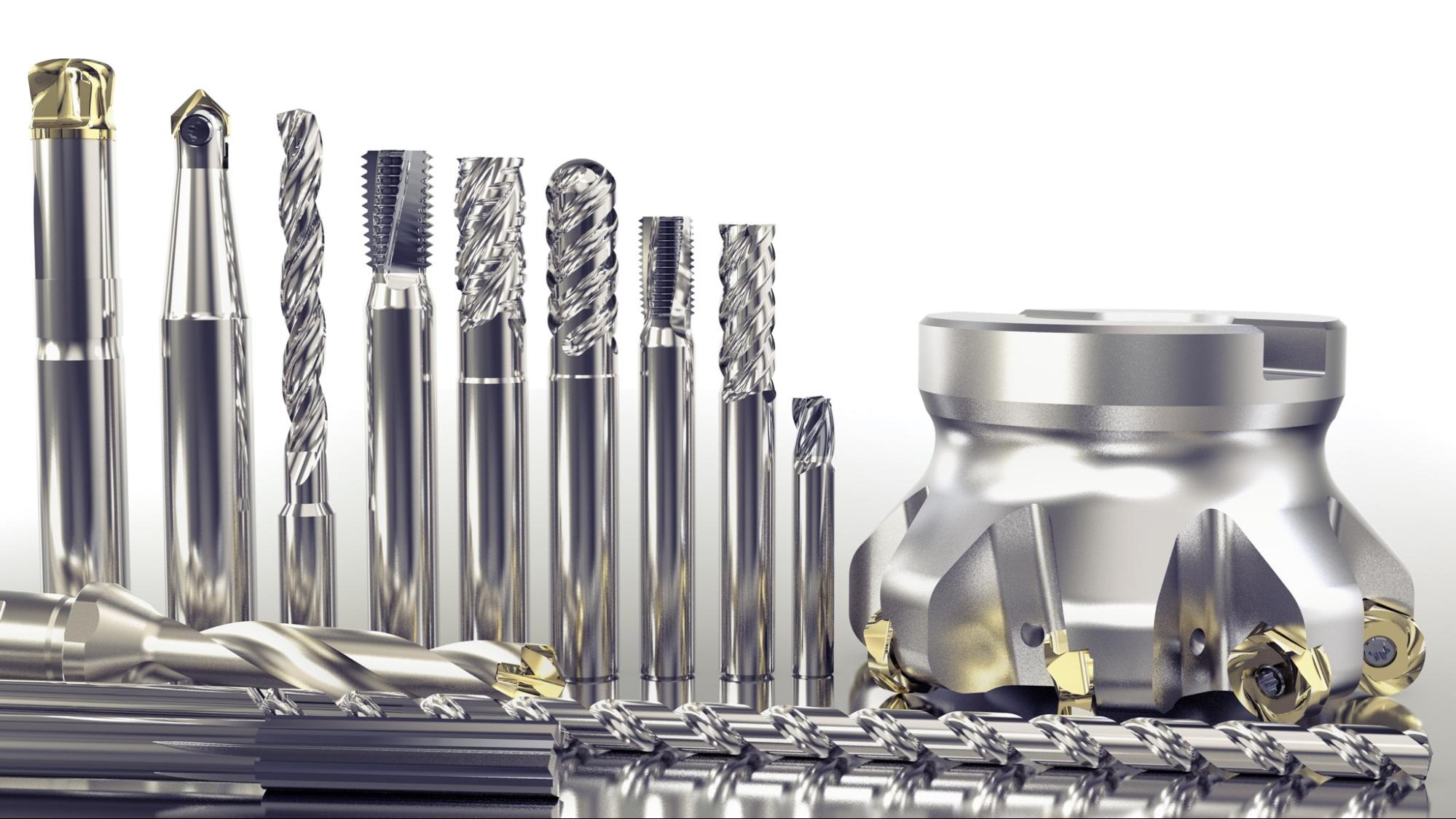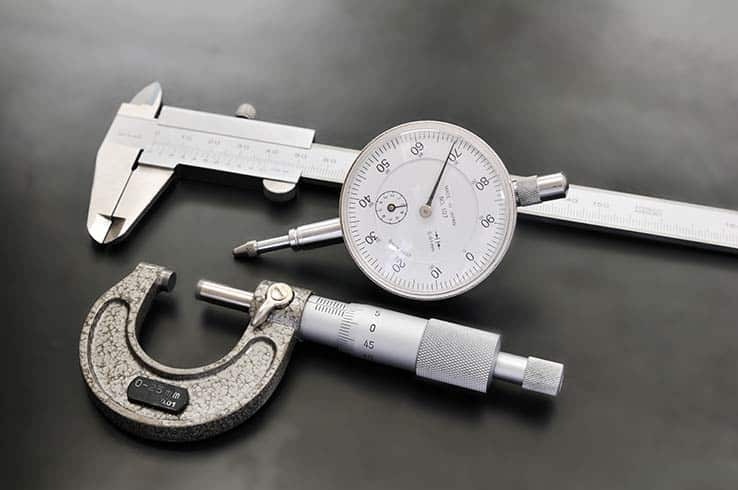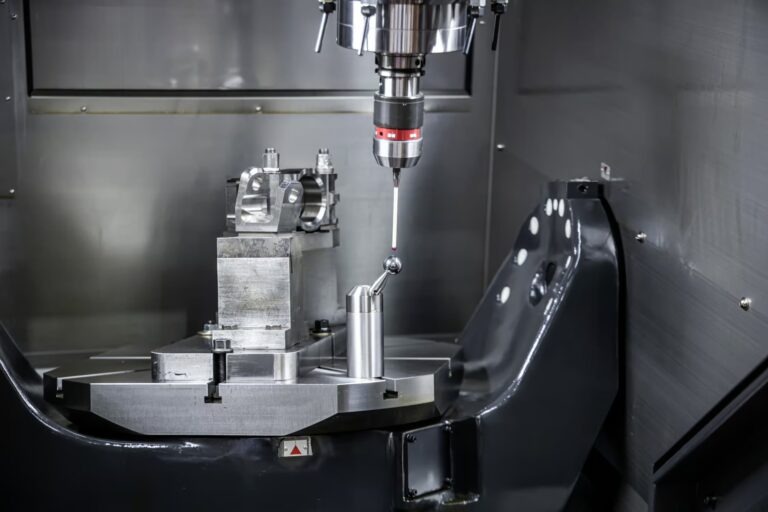Na indústria de manufatura moderna, a alta precisão é essencial para uma produção eficaz. máquinas CNCEsses setores, como o aeroespacial, o automotivo e o eletrônico, estão sujeitos a restrições muito rigorosas, e melhorar a precisão das máquinas CNC é uma das principais prioridades e maiores desafios.
Com ferramentas alinhadas e otimizadas, software avançado e instruções claras para os operadores, as oficinas alcançariam uma clareza impressionante sem a necessidade de adquirir novas máquinas. Aprimorar a precisão das máquinas CNC envolve compreender cada pequeno fator que pode variar de fabricante para fabricante, visando o melhor resultado de produção.
Além disso, aplica ações de ajuste para melhorar o desempenho e garantir que até mesmo o menor desalinhamento seja minimizado, otimizando os resultados da produção.
A precisão de uma máquina CNC refere-se à sua capacidade de produzir peças de acordo com as especificações exatas do projeto original. Inclui também a avaliação da correspondência entre as dimensões finais do produto e as dimensões programadas. A precisão do percurso da ferramenta, a repetibilidade e a exatidão do posicionamento são parâmetros que influenciam essa precisão.
A alta precisão das máquinas CNC resulta em menor desperdício de material, redução do tempo nos ciclos de produção e qualidade consistente em múltiplas execuções. Mesmo a menor imprecisão pode levar ao desenvolvimento de uma peça defeituosa, causando retrabalho ou rejeição de lotes. Tudo isso, em relação direta à lucratividade e à eficiência da produção, exige esforços contínuos para aprimorar a precisão das máquinas CNC.

A calibração é fundamental para a melhoria da precisão de máquinas CNC. É essencial que a calibração seja realizada corretamente. A inicialização da máquina como um todo é garantida, pois uma calibração regular fará com que todos os eixos da máquina se movam exatamente como deveriam. Isso minimizará os erros durante o posicionamento. As máquinas são verificadas quanto ao alinhamento, desgaste mecânico e folga.
Os sistemas de calibração a laser são capazes de realizar verificações de eixos com alta precisão, enquanto os testes com barra de esferas detectam erros geométricos. Além disso, é fundamental garantir o alinhamento do fuso, das guias e dos mecanismos de acionamento. Caso contrário, ocorrerão imprecisões dimensionais prematuras. A manutenção adequada realizada durante as verificações de calibração aumenta a estabilidade e a confiabilidade a longo prazo.
A precisão e o acabamento superficial dependem das ferramentas de corte utilizadas na usinagem CNC. A seleção do tipo correto de corte, da dureza dos materiais, da geometria e do revestimento — idealmente, uma nuvem de partículas — garante o melhor desempenho de corte. Revestimentos de alta qualidade com ponta de metal duro proporcionam maior vida útil e propriedades superiores de resistência ao calor. Por exemplo, TiN ou TiAlN também podem apresentar maior durabilidade.
Além disso, a inspeção e substituição regulares de ferramentas desgastadas ou lascadas são igualmente essenciais. Uma ferramenta cega afeta não apenas a precisão da peça, mas também aumenta o calor e a vibração, podendo causar deformações nas peças. É importante ter uma rotina de manutenção preventiva para as ferramentas em uso, a fim de garantir uma precisão de usinagem consistente.

Entretanto, a taxa de avanço da ferramenta acima da velocidade do fuso é irregularmente alta. Ambas são naturalmente inadequadas para a medição da profundidade de corte, causando, respectivamente, deflexão ou vibração da ferramenta, resultando em peças sem precisão. A configuração com ajustes conservadores apresenta produtividade reduzida.
Por exemplo, com esses parâmetros, é possível atingir o ponto ideal, descoberto apenas por meio de tentativas e erros. Descoberta por tentativa e erro, com dados que a comprovam. Isso melhora tanto a precisão quanto a eficiência. Posiciona as peças móveis de forma a proporcionar operações de usinagem mais suaves e maior vida útil da ferramenta. Reduz a variação dimensional — características essenciais para alcançar usinagem de precisão em larga escala.
Na verdade, o software e os sistemas de controle desempenham um papel vital na melhoria da precisão de um sistema CNC moderno. Os sistemas CNC modernos agora vêm com algoritmos de compensação integrados que levam em conta a expansão térmica, a folga e a deriva dos eixos. Versões atualizadas do software permitirão que os operadores aproveitem os recursos aprimorados relacionados à compensação de erros.
A aquisição em tempo real desses sistemas de controle também pode ser ajustada de forma adaptativa, dependendo das condições de corte atuais. Investe-se tempo suficiente em uma boa configuração do software CNC. Obtêm-se trajetórias de ferramenta mais suaves, a tensão mecânica é reduzida e a consistência da peça é muito maior.
O ambiente circundante influencia consideravelmente o desempenho das máquinas CNC. Variações de temperatura, umidade e vibrações podem causar alterações dimensionais e erros de alinhamento. As máquinas devem ser instaladas em salas com atmosfera controlada, onde as temperaturas permaneçam estáveis, geralmente em torno de 20°C.
Mesmo pequenas variações de temperatura podem alterar a expansão e a contração dos componentes, afetando a precisão. Sistemas adequados de isolamento de vibração, filtragem de ar e controle de poeira também ajudam a manter alta precisão. Ao controlar as condições ambientais, os fabricantes protegem suas máquinas CNC contra interferências externas que poderiam reduzir a eficácia e a precisão.
A habilidade de operar máquinas impacta diretamente a precisão dos resultados. Operadores treinados conseguem detectar vibrações excessivas, ruídos ou desgaste de ferramentas antes que se tornem problemas. A educação continuada mantém os operadores atualizados em relação à programação CNC, métodos de calibração e normas de segurança vigentes.
No entanto, operadores que compreendem a otimização do código G, a estratégia de trajetória da ferramenta e o comportamento da máquina estariam em condições de fazer ajustes, concentrando-se na prevenção constante de falhas. A intervenção humana qualificada continua sendo um dos fatores mais importantes para a manutenção da precisão constante da máquina ao longo dos lotes de produção.
Medição e verificação de precisão são os principais pilares para a melhoria da precisão em máquinas CNC. Os produtos finais devem estar em conformidade com o projeto, o que é permitido por meio de instrumentos de medição de precisão, como máquinas de medição por coordenadas (MMCs), interferômetros a laser e micrômetros.
Técnicas de inspeção, como sistemas de medição baseados em sondas, permitem a detecção de erros em tempo real, reduzindo a necessidade de correções. O Controle Estatístico de Processo (CEP) subsequente auxilia no rastreamento de variações e garante a repetibilidade. Esses mecanismos de verificação da qualidade fornecem um feedback valioso para a calibração da máquina e a otimização dos parâmetros do processo, visando maior precisão.
A integração da automação e das tecnologias inteligentes transformou completamente a precisão das máquinas CNC. Atualmente, as máquinas modernas, equipadas com sensores orientados a IA e sistemas de IoT, monitoram continuamente parâmetros como desgaste da ferramenta, carga do fuso e variações térmicas em tempo real. Esse alinhamento de parâmetros ocorre automaticamente, mantendo a precisão e dispensando a intervenção humana.
Os algoritmos de aprendizado de máquina podem atender às necessidades de manutenção baseadas em projeções para manter essa máquina em funcionamento. Isso reduz o tempo de inatividade e aumenta a precisão. A tecnologia de Manufatura Inteligente funciona com base em insights orientados por dados que ajudam a melhorar constantemente o desempenho e a reduzir erros sistêmicos.

A automação, integrada ao monitoramento por IA, depende do funcionamento das máquinas CNC. Através de análises preditivas, os sistemas detectam e identificam erros no momento em que ocorrem. Medidas corretivas são ativadas antes mesmo que eles aconteçam. O monitoramento em tempo real garante a precisão de cada movimento. Os algoritmos de IA aprendem com as execuções anteriores para otimizar o desempenho futuro.
Essas rotinas de calibração automatizadas confirmam a precisão do posicionamento em todos os momentos. Os gêmeos digitais representam as produções, permitindo uma configuração sem erros. Isso vai muito além da melhoria da precisão da saída, abrangendo também melhorias na eficiência do fluxo de trabalho com resultados de maior qualidade e menos desperdício.
As máquinas CNC enfrentam muitos problemas de precisão que posteriormente impactam a produtividade. Os problemas mais comuns incluem folga, deflexão da ferramenta, distorção térmica, excentricidade do fuso e desalinhamento dos eixos de alguma forma.
Embora o uso de uma configuração inadequada cause desalinhamento, parâmetros de corte rebaixados ou uma ferramenta com projeção excessiva podem causar deflexão da ferramenta. A deriva térmica afeta principalmente a geometria da máquina durante operações prolongadas.
A resolução de problemas exige que os operadores realizem calibrações regulares. Isso inclui a verificação do alinhamento, o aperto de peças mecânicas e o monitoramento da temperatura da máquina. O uso de equipamentos de diagnóstico, como interferômetros a laser e analisadores de vibração, ajuda a identificar as causas principais desses problemas.
Desalinhamento do eixo:
O teste Ballbar deve ser realizado para detectar falhas e, posteriormente, para realinhar as guias ou as bases da máquina.
Retaliação:
Ajuste as configurações de compensação de folga no sistema de controle ou substitua os fusos de esferas. Depois disso, as porcas podem ter se desgastado.
Desvio da ferramenta:
Reduza a quantidade de ferramenta que fica exposta, aumente a rigidez da ferramenta e otimize os parâmetros relacionados ao corte. Por exemplo, a taxa de avanço e a profundidade de corte.
Expansão térmica:
Mantenha ambientes com temperatura controlada e utilize software de compensação térmica para neutralizar qualquer expansão térmica.
Desvio do eixo:
Verifique e substitua os rolamentos do eixo, equilibre o conjunto do eixo e observe as sedes de vedação do porta-ferramentas.
Acabamento superficial ruim:
Ajuste as configurações de avanço e velocidade; utilize ferramentas afiadas com geometria adequada; e aplique fluido de corte em quantidade suficiente.
Dimensões inconsistentes:
Recalibração periódica da máquina, inspeção da estabilidade de fixação da peça e verificação da precisão da fixação.
Vibração e ruído:
É garantida a fixação estável, os ajustes de velocidade do fuso e a inspeção do desgaste irregular ou do desequilíbrio da ferramenta.
Atraso do controlador ou erros do servo:
Atualização do software CNC, ajuste fino dos parâmetros do servo e verificação da estabilidade das conexões elétricas.

• Qualidade aprimorada do produto:
Com maior precisão, cada componente é produzido para atender a tolerâncias rigorosas, resultando em produtos finais de alta qualidade.
• Redução do desperdício de materiais:
A usinagem de precisão minimiza erros e desperdício, resultando em custos reduzidos de matéria-prima.
• Redução dos custos de produção:
Retrabalho mínimo e maior eficiência resultam em economias consideráveis ao longo do tempo.
• Prolongamento da vida útil de ferramentas e máquinas:
A redução do estresse desnecessário seria obtida por meio de cortes precisos, o que aumenta a vida útil das ferramentas e dos componentes.
• Aumento da produtividade:
Menos erros, velocidade de fluxo de trabalho otimizada e um equilíbrio na produção geral resultam no aumento da produtividade.
• Melhor repetibilidade:
A mesma precisão resulta em resultados duplicados em diferentes lotes de produção.
• Melhoria na satisfação do cliente:
Peças precisas e confiáveis geram confiança no cliente, o que, por fim, leva a relacionamentos comerciais de longo prazo.
• Vantagem competitiva:
É precisamente através da usinagem que os fabricantes conseguem atender aos rigorosos padrões da indústria e superar seus concorrentes.
• Maior retorno sobre o investimento (ROI):
Reduzir o tempo de inatividade, aumentar a produtividade e a lucratividade são benefícios da melhoria da precisão.
A CNCYANGSEN é especialista em soluções CNC de alta precisão que aprimoram a exatidão e a eficiência das máquinas. As máquinas CNC fabricadas são equipadas com sistemas de controle de última geração, estruturas robustas e tecnologias de automação inteligente.
Faça parceria com a CNCYANGSEN para obter precisão, confiabilidade e produtividade superiores em usinagem. Entre em contato conosco agora mesmo para obter mais informações sobre a gama completa de soluções de usinagem de precisão que oferecemos.
A melhoria da precisão das máquinas CNC é um processo complexo que combina precisão mecânica com software inteligente e operação especializada. Fabricantes que adotam essa abordagem conseguem obter resultados excelentes, graças à calibração, manutenção das ferramentas e controle do ambiente.
Claramente, a evolução contínua da tecnologia irá redefinir os métodos automatizados de otimização baseados em IA, mantendo a precisão. Enquanto isso, os investimentos nessas melhorias resultarão em desempenhos consistentes e maior produtividade, trazendo vantagens competitivas a longo prazo.